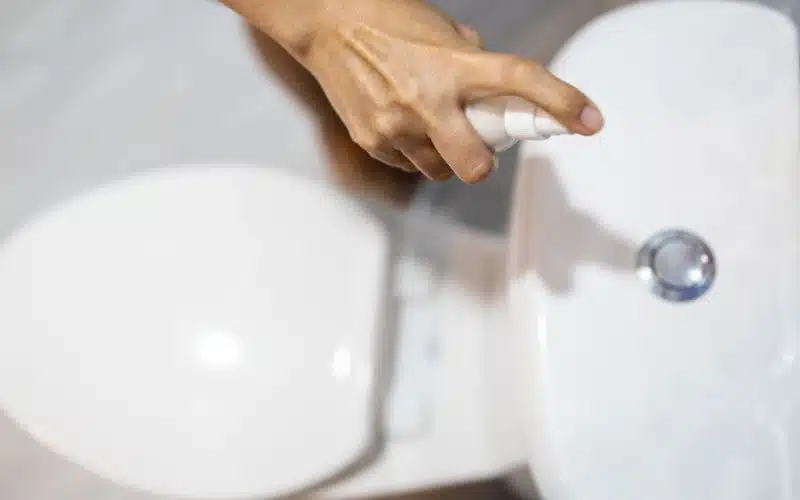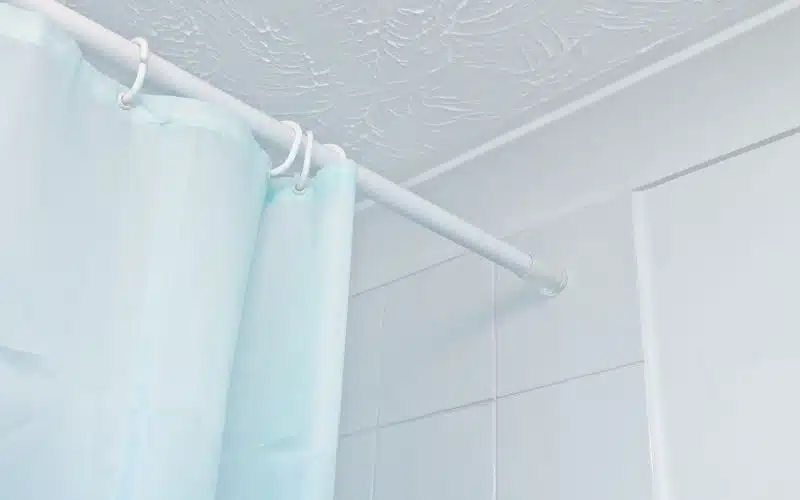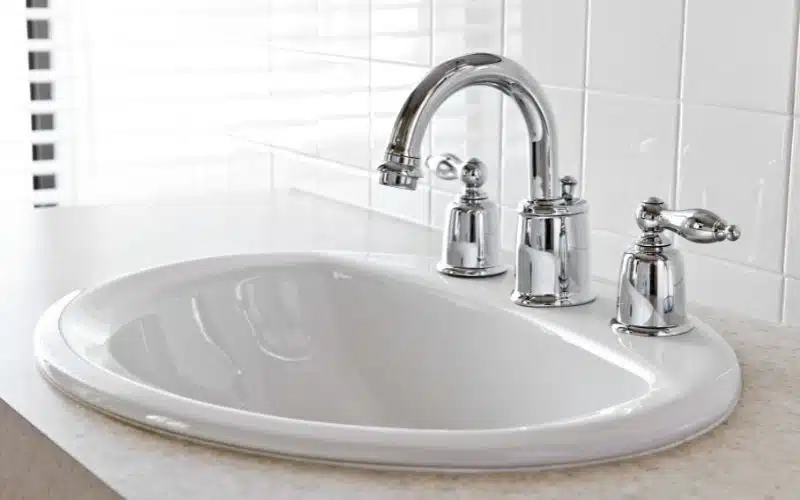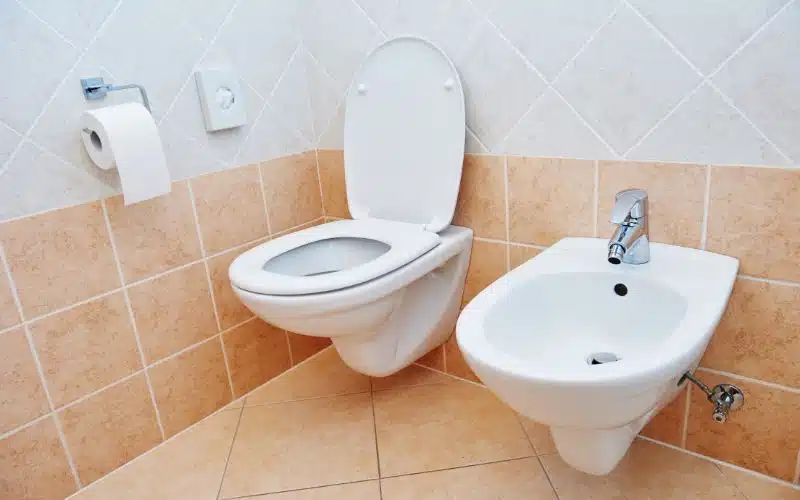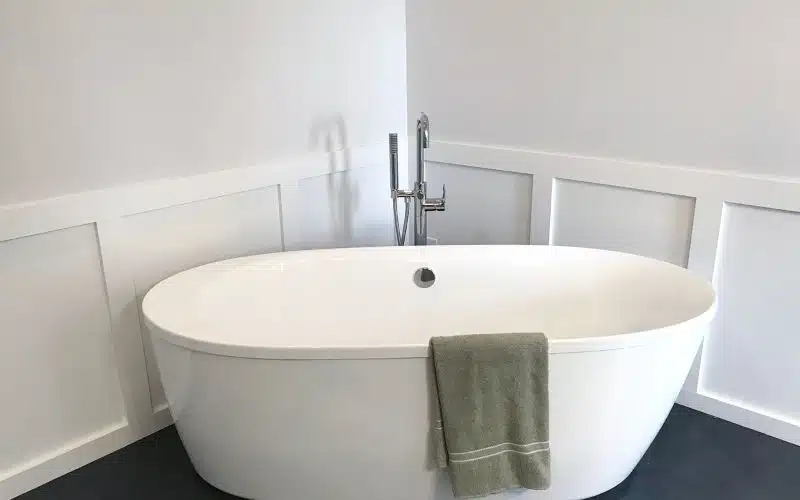Few things beat the feeling of getting into a tub for a well-deserved soak after a hectic day at work.
Bathtubs are not just for bathing and relaxing; they also serve as eye candy and affect how your bathroom looks.
Tubs change color due to bacteria and scum accumulation. Such stains are stubborn and do not wash off easily. You can whiten your Bathub by following the following steps.
You can whiten your bathtub by dousing it in warm water and applying store-bought tub cleaners like Clorox, or you can use household ingredients like Vinegar and baking soda. Whether retail cleaners or DIY homemade ingredients, they are excellent cleaners.
How Do I Make My Old Bathtub White Again?

Yellowish and discolored tubs can discourage even the most tired worker or tub enthusiast. Bathtubs you use regularly will get dirty and change color with time.
Soap scum, body oils, and dead skin cells can harbor molds and bacteria in the bathtub. These molds can eat away the coating of your tub, weakening or spoiling it.
There are different methods you can use to whiten your bathtub, the method you choose ultimately depends on the level of discoloration on the tub.
You can clean light discoloration using ordinary household soap and sponge, while heavy stains require heavy–grade cleaners.
Here is a list of ways you can whiten your bathtub based on the order of difficulty starting from light discoloration to heavier ones.
#1. Light Discoloration
The light discoloration on bathtubs is composed of grime and molds accumulating on the surface of your tub.
Dirt and grime will form a layer over the bathtub’s surface and change its color over time.
Luckily slight discolorations like this are very easy to get rid of; you need a bit of soap, a soft toilet sponge, and warm water.
- Start by wetting the surface of the tub with warm water.
- Apply the soap to the tub surface or mix it with some of the water and make some lather.
- Use the sponge to scrub the tub’s surface; ensure you scrub the badly affected surfaces well.
- Rinse with warm or cold water and dry the tub with a rag.
#2. Medium Discoloration
The accumulation of higher amounts of molds and bacteria will cause a stronger discoloration in your bathtub.
You cannot easily clean this discoloration with just ordinary soap and water. Medium levels of discoloration require a bit of DIY innovation and creativity.
Many household items work wonders in removing such stains. You can remove medium levels of stains with vinegar, baking soda, and dish soap.
- Mix the Vinegar and baking soda in a bowl until it forms a thick paste.
- Apply the mixture evenly to the surface of the bathtub.
- Allow it to set for 15-20 minutes.
- Use the dish soap and sponge to scrub off the mixture.
- Rinse and dry the tub with a rag
#3. Heavy Discoloration
In situations where your tub looks like a scene out of a horror movie, a normal household cleaning agent will not cut it.
You are going to need industrial–grade cleaning agents. Heavy cleaning ingredients like Clorox, bleach, and hydrogen peroxide will clean even the most stubborn stains.
- Mix hydrogen peroxide and baking soda and apply them to the tub surface.
- Follow the manufacturer’s guide on how to use Clorox toilet and bathtub cleaner.
You should not use acidic–based cleaners to clean porcelain and acrylic tubs. The acid will dissolve the enamel coating, further damaging the tub.
What Can You Use To Whiten Your Bathtub?
No matter how bad your bathtub looks, there’s always a way to whiten it. The coating on bathtubs doesn’t always change color, but the bacteria and mold on the surface cause discoloration.
There are plenty of things you can use to whiten your bathtub. Here are some materials and ingredients you can use to whiten your tub; some can be found at home, while you can buy some at the store.
#1. Baking Soda
Baking soda is an alkali, allowing it to dissolve dirt and grime when mixed with water or some other solvent.
Baking soda also has slight abrasive properties that allow it to rub off stains without scratching the surface.
#2. Vinegar
Acetic acid {another name for vinegar}, is a powerful household solvent. Vinegar is acidic and works wonders when used to clean surfaces.
Vinegar acidity allows it to dissolve dirt and kill germs and bacteria. You can increase Vinegar’s effectiveness on surfaces by mixing it with baking soda.
#3. Retail Cleaning Agents
Over-the-shelf cleaning agents like Clorox and jik are good cleaning agents. Clorox and jik are chlorine-based cleaners.
They are very effective on stubborn stains and discoloration. However, you must ensure the surface you are cleaning doesn’t react to bleach.
#4. Dish Soap
Dish soap is cheap and should be your first choice of the cleaning agent. Dish soap can clean ant surfaces irrespective of composition.
Soap is inert and is not very reactive; this makes them perfect for cleaning sensitive surfaces.
How Do You Clean a Badly Stained Bathtub?
Badly stained bathtubs require industrial-grade cleaners and bleach before You can clean them properly.
Bleach-based cleaners like Clorox and some carbonated energy drinks are good at removing difficult stains.
Removing stains on bathtubs should be done with care and caution. You cannot use some chemicals on some particular types of bathtubs.
Here is a table of the characteristics of bathtubs and the materials you can use to clean them.
| Bathtub Type | Supported Cleaning Agents |
|---|---|
| Enamel tubs | Water, baking soda, and diluted Vinegar. |
| Porcelain tubs | Water, baking soda, Vinegar, and bleach. |
| Fiberglass tubs | Water, baking soda, and diluted Vinegar. |
| Acrylic tubs | Water, baking soda, Vinegar, bleach, and hydrogen peroxide. |
How Do You Whiten a Yellow Fiberglass Board?
Fiberglass tubs change color due to soap scum from dirt and hard water—stains like this manifest as yellowish discoloration on the sides or floor of your tub.
Fiberglass stains do not go away easily, and you have to prepare the right materials to be able to clean such stains.
Avoid using abrasive brushes or sponges on your fiberglass tub. Abrasive brushes will scratch the surface of your fiberglass tub, compromising its integrity and leaving nasty scars on its surface.
Here is a list of some DIY materials you can use to Whiten your fiberglass tub.
#1. Materials Needed
Materials in this list can be easily found around your house and are cheaper than store-bought tub cleaners.
#1. Dish Soap
It’s an important cleaning agent that can eliminate many tubs and toilet stains. They ate cheap and are non-corrosive, making them perfect for cleaning surfaces.
#2. Baking Soda
It’s a soft abrasive, dissolving dirt and moldy Growths. Baking soda performs better when mixed with vinegar or hydrogen peroxide.
#3. Hot Water or Hydrogen Peroxide
They act as a solvent for baking soda, while hydrogen peroxide oxidizes bacteria and grime.
#4. Sponge
Avoid using abrasive or iron sponges; hard sponges scratch the fiberglass surface. Scratches on the fiberglass will become breeding grounds for molds and bacteria.
#5. Rubbing Wax
It produces a smooth and fine finish.
#2. Mix The Baking Soda and Dish Soap
Mix the baking soda and dish soap in a bowl until it becomes a thick paste. You can use water or hydrogen peroxide as a solvent, but hydrogen peroxide will be a better option.
#3. Apply the Mixture To the Tub
Spread out the mixture on the surface of the tub. Concentrate the mixture on areas that have the most discoloration and molds. Allow it to dry for about 20 minutes on the tub surface.
#4. Rinse the Tub
After the mixture has dried, use the sponge and dish soap to wash off the mixture. Scrub the surface of the tub hard, and rinse with warm water.
#5. Apply Rubbing Wax
After rinsing, dry the tub’s surface with wax and apply bathtub wax. Apply a thin layer of wax and rub till all corners of the tub are properly waxed.
- BATHTUB MAKEOVER: With our Ekopel 2K custom...
- POLISH AND PROTECT: This is the perfect solution...
- APPLICATION STEPS: Rest assured our premium...
- LONG-LASTING QUALITY: The durable Ekopel coating...
Last update on 2024-01-05 / Affiliate links / Images from Amazon Product Advertising API
How To Whiten Acrylic Bathtub?
Acrylic tubs are acrylic that is vacuum pressed and reinforced with fiberglass. That means acrylic tubs have the advantages of fiberglass while negating fiberglass disadvantages.
Acrylic bathtubs react badly to acidic-based cleaners, so it is not advisable to use harsh industrial cleaners on your acrylic bathtub.
#1. Materials Needed
- Soft shampoo
- Rubbing rag or cloth
- Rubbing wax
- Hot water
#2. Wet the Surface of the Tub
Pour the hot water on the tub’s surface and wet it properly. Ensure the water touches all areas of the tub, especially the most discolored places.
#3. Soap and Clean
Put some soap or shampoo in a water bowl and shake it till there’s lots of foam. Add generous amounts of soap; the more, the better.
#4. Rinse and Wax
After washing the tub properly, rinse it with warm water and dry it with a lint-free rag. Purchase a bathtub waxer and wax the tub till it shines and glitters.
Conclusion
You can whiten your bathtub with over-the-counter cleaners and household items. You must ensure you use the proper cleaner for your bathtub because bleach and acidic cleaners are bad for some bathtubs.
It would be best for you to wash your tub once or twice a week to prevent the growth of mold and bacteria that can cause discoloration.

